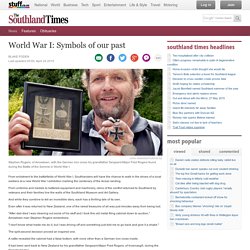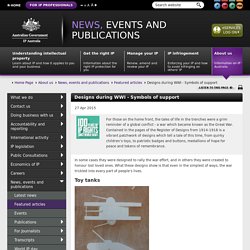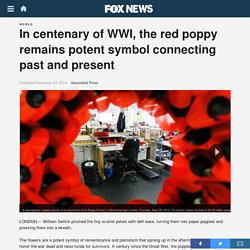

British WW1 Medals. Hundreds of thousands of men who served with the armed services, some women and some civilians received at least one WW1 medal.

There are two main kinds of WW1 medal awards: campaign medals and gallantry or meritorious service awards. Campaign Medals A Campaign or a War Medal was awarded to an individual if he or she took part in a military campaign outside of the United Kingdom in a Theatre of War or in a time of war. Guide to British WW1 Campaign Medals Gallantry or Meritorious Service Awards Some individuals were awarded with a gallantry medal, an award for distinguished or meritorious service or were Mentioned in Despatches for showing special courage or devotion to duty in a particular action or circumstance. Doubtless there were many acts of courage and gallantry in the First World War which went unseen and for which no formal gallantry award was given. Guide to British WW1 Gallantry and Meritorious Service Awards Finding Records for WW1 Medals British Army WW1 Medal Records 1914-1920. World War I: Symbols of our past. Last updated 05:00, April 24 2015 Stephen Rogers, of Arrowtown, with the German iron cross his grandfather Sergeant-Major Fred Rogers found during the Battle of the Somme in World War I.

From enlistment to the battlefields of World War I, Southlanders will have the chance to walk in the shoes of a local soldiers at a new World War I exhibition marking the centenary of the Anzac landing. From uniforms and medals to battered equipment and machinery, relics of the conflict returned to Southland by veterans and their families line the walls of the Southland Museum and Art Gallery. And while they combine to tell an incredible story, each has a thrilling tale of its own. Even after it was returned to New Zealand, one of the rarest treasures of all was just minutes away from being lost.
"After dad died I was cleaning out some of his stuff and I took this old metal filing cabinet down to auction," Arrowtown man Stephen Rogers remembers. The split-second decision proved an inspired one. Designs during WWI - Symbols of support. 27 Apr 2015 For those on the home front, the tales of life in the trenches were a grim reminder of a global conflict - a war which became known as the Great War.

Contained in the pages of the Register of Designs from 1914-1918 is a vibrant patchwork of designs which tell a tale of this time, from quirky children's toys, to patriotic badges and buttons, medallions of hope for peace and tokens of remembrance. In some cases they were designed to rally the war effort, and in others they were created to honour lost loved ones. What these designs show is that even in the simplest of ways, the war trickled into every part of people’s lives. Toy tanks Caption: John Daly's 'Toy War Tank', 10 December 1917, no. 2588. The military tank became one of the most common symbols of the battlefront. Caption: William Iggulden's 'Toy rocker', 29 July 1918, no. 2761. War is not a game Caption: Frederick Paton's 'Puzzle', 23 January 1917, no. 2345, National Archives of Australia, A13166, 3 Footnotes. Gallipoli: The New Zealand Story. Timeline and graphic display of Allied deaths during and following WWI.
In centenary of WWI, the red poppy remains potent symbol connecting past and present. A view through a poppy wreath of the workroom at the Poppy Factory in Richmond near London, Thursday, Sept. 25, 2014.

The factory makes the bulk of the 45 million poppies, wreaths and crosses sold across Britain to this day. (AP Photo/Kirsty Wigglesworth) (The Associated Press) William Sellick, a former soldier in the Royal Green Jackets, who served in Northern Ireland, constructs poppy wreaths at the Poppy Factory in Richmond near London, Thursday, Sept. 25, 2014. With a practiced hand the 65-year-old veteran pinches two fabric petals, shapes them into a miniature flower, and attaches that to a wreath mold. Sellick, who suffered combat stress after an army tour to Northern Ireland in the 1970's finds making the wreaths a way to move on from a life shadowed by depression and alcoholism. LONDON – William Sellick pinched the tiny scarlet petals with deft ease, turning them into paper poppies and pressing them into a wreath.